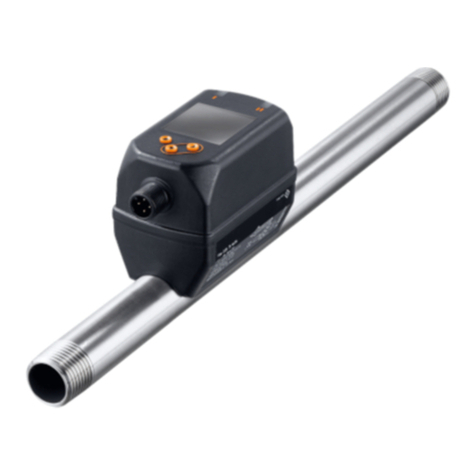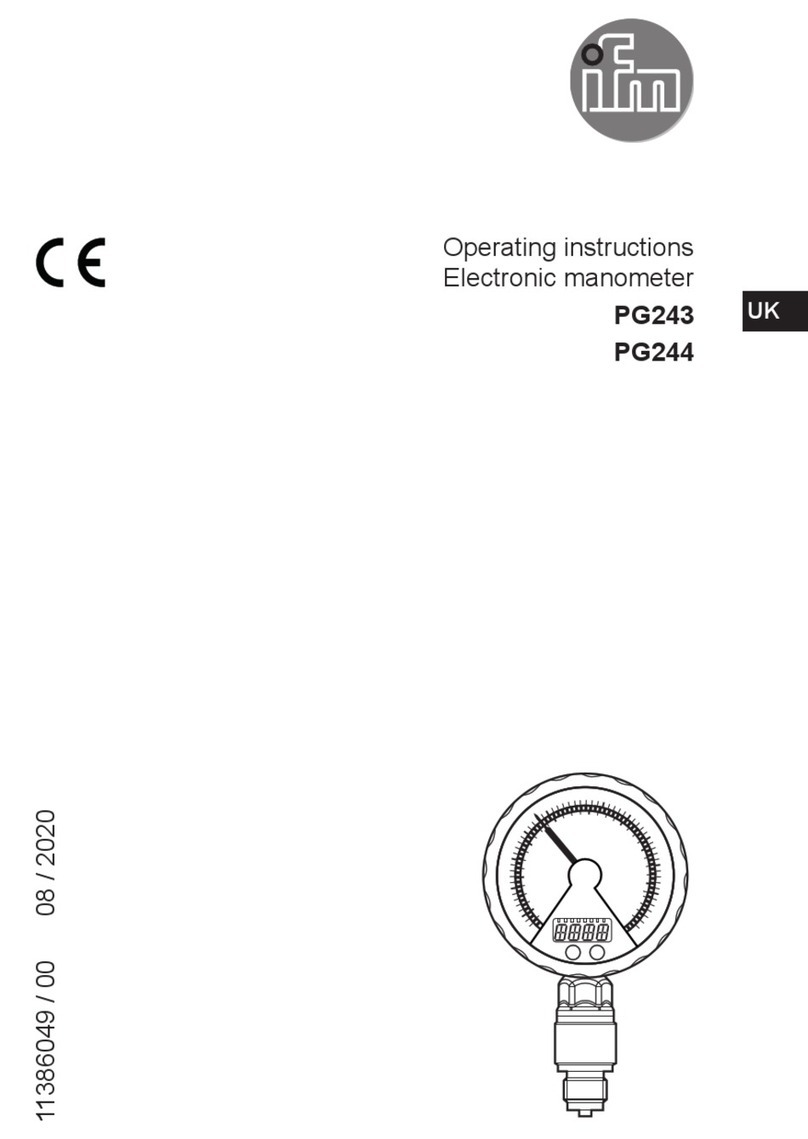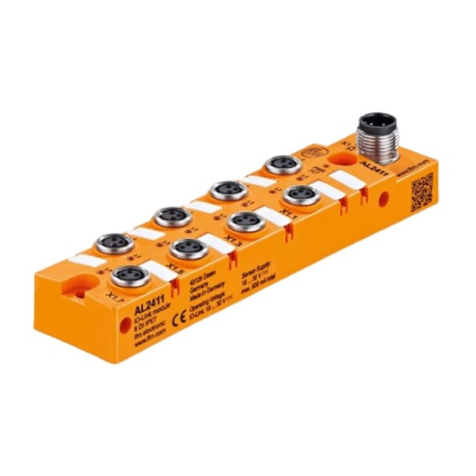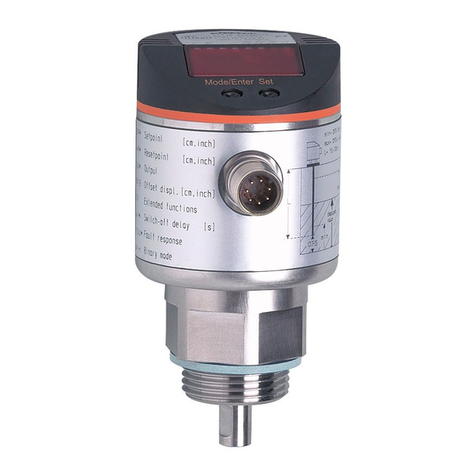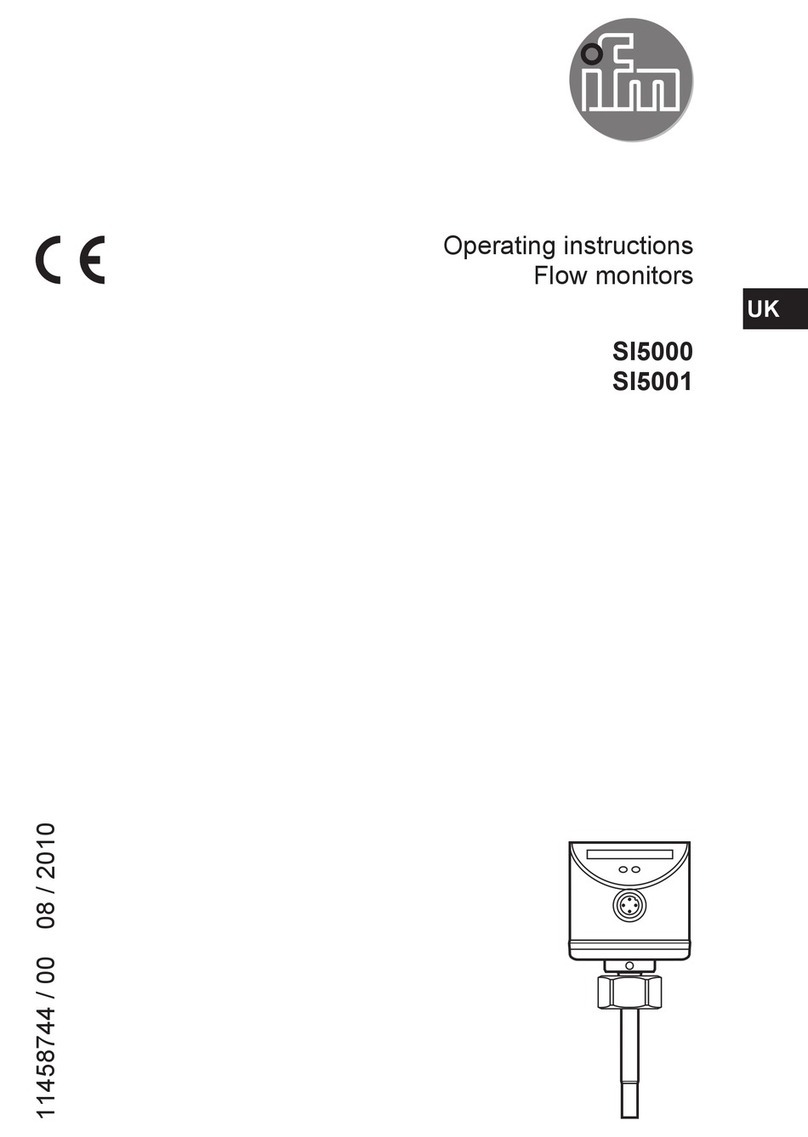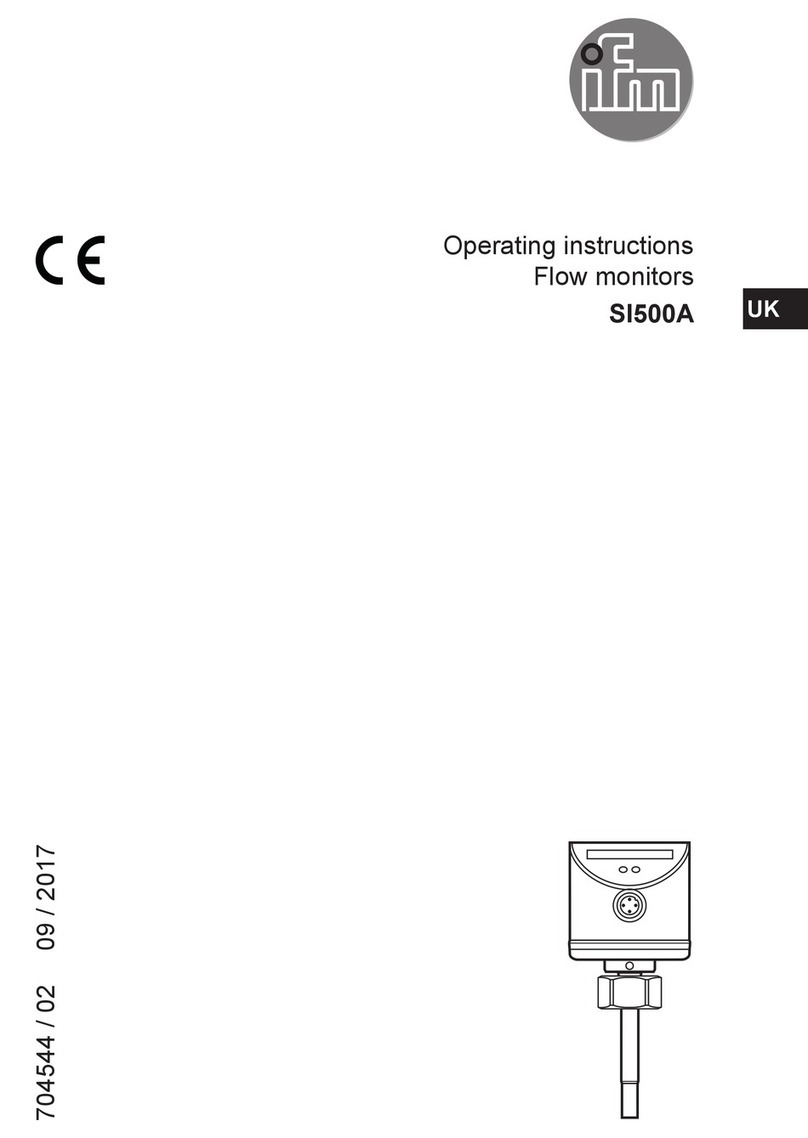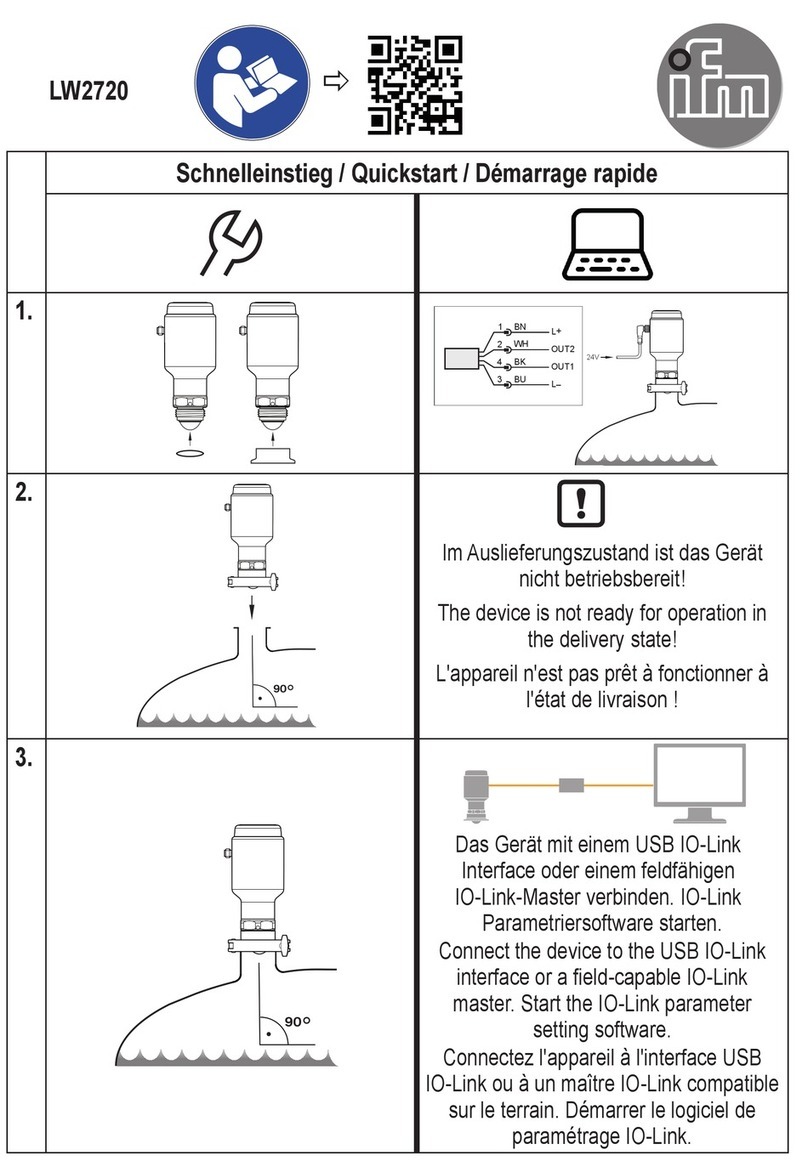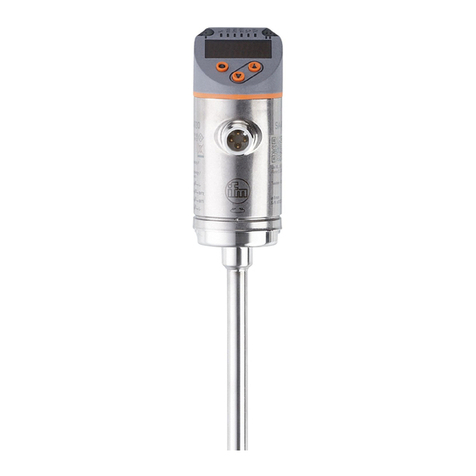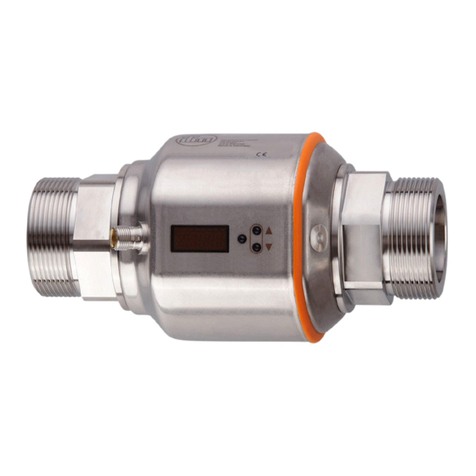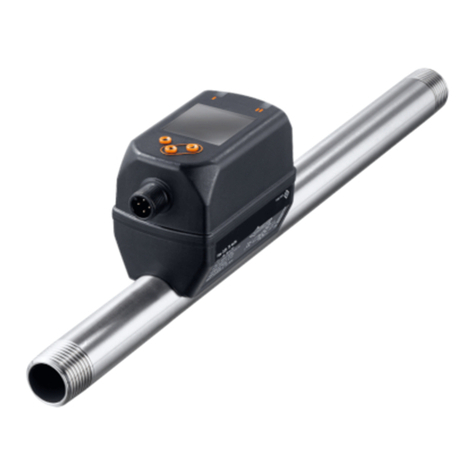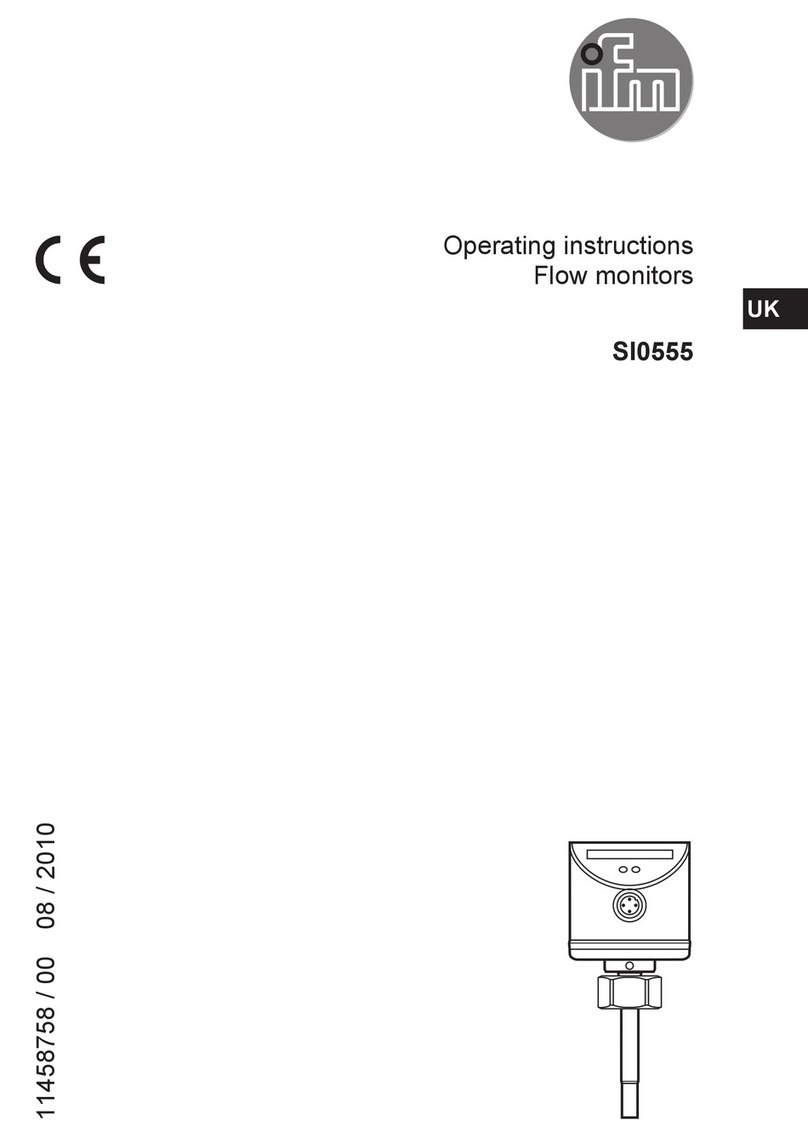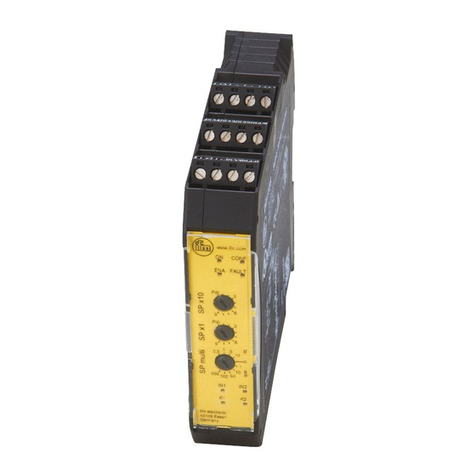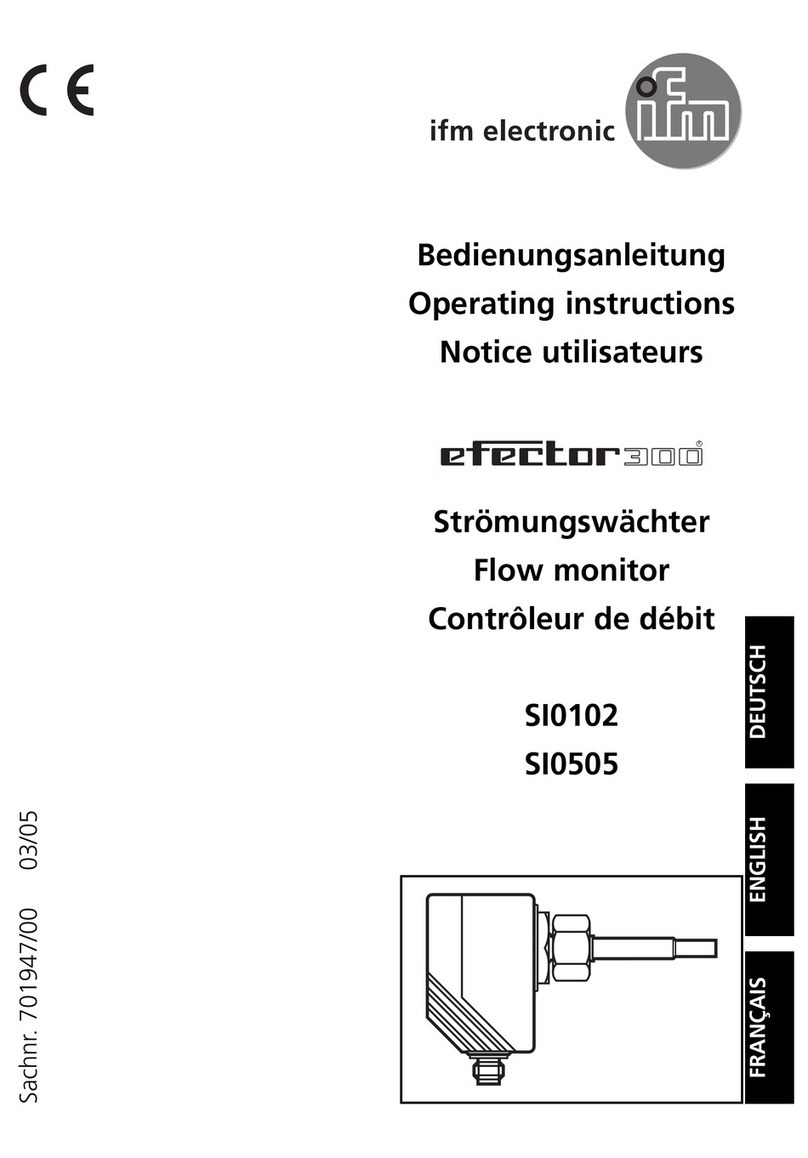
3
UK
9�1 Parameter setting in general �����������������������������������������������������������������������18
9�1�1 Extended menu 1 �������������������������������������������������������������������������������19
9�1�2 Extended menu 2 �������������������������������������������������������������������������������19
9�1�3 Locking / unlocking �����������������������������������������������������������������������������19
9�1�4 Timeout�����������������������������������������������������������������������������������������������20
9�2 Settings for volumetric flow monitoring��������������������������������������������������������20
9�2�1 Adjustment to the internal pipe width��������������������������������������������������20
9�2�2 Configure limit value monitoring with OUT1 ���������������������������������������20
9�2�3 Configure limit value monitoring with OUT2 ���������������������������������������20
9�2�4 Configure analogue value for volumetric flow�������������������������������������20
9�3 Settings for consumed quantity monitoring �������������������������������������������������21
9�3�1 Configure quantity monitoring via pulse output ����������������������������������21
9�3�2 Configure quantity monitoring via the preset counter �������������������������21
9�3�3 Configure program-controlled meter reset������������������������������������������21
9�3�4 Deactivate meter reset �����������������������������������������������������������������������21
9�3�5 Configure meter reset using an external signal ����������������������������������21
9�4 Settings for temperature monitoring ������������������������������������������������������������22
9�4�1 Configure limit value monitoring with OUT2 ���������������������������������������22
9�4�2 Configure analogue value for temperature �����������������������������������������22
9�5 User settings (optional)��������������������������������������������������������������������������������22
9�5�1 Set standard unit of measurement for volumetric flow �����������������������22
9�5�2 Configure standard display�����������������������������������������������������������������23
9�5�3 Set output status in fault condition������������������������������������������������������23
9�5�4 Set measured value damping�������������������������������������������������������������23
9�5�5 Set low flow cut-off �����������������������������������������������������������������������������23
9�5�6 Calibrate curve of measured values ���������������������������������������������������23
9�5�7 Reset calibration data�������������������������������������������������������������������������24
9�5�8 Set standard pressure which serves as a reference for measured and
display values for volumetric flow�����������������������������������������������������������������24
9�5�9 Set standard temperature which serves as a reference for measured
and display values for volumetric flow����������������������������������������������������������24
9�6 Service functions �����������������������������������������������������������������������������������������24
9�6�1 Read min/max values for volumetric flow �������������������������������������������24
9�6�2 Reset all parameters to factory setting �����������������������������������������������24
9�7 Set preset counter / pulse value (ImPS)������������������������������������������������������25
10 Operation���������������������������������������������������������������������������������������������������������27
10�1 Read set parameters ���������������������������������������������������������������������������������27












